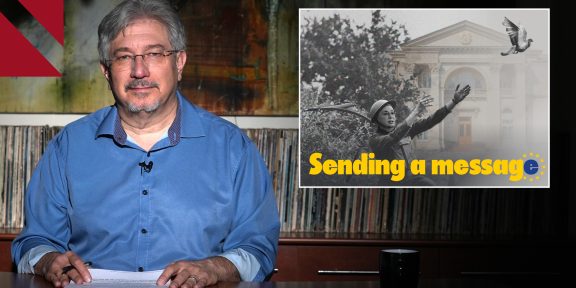The Armenian Ministry of Culture offered its assistance for restoring the historical site of Palmyra, as reported by Syria’s Sana state owned news agency.
 The Temple of Baal, a Roman-era trading outpost in Palmyra. A UN agency says it was mostly flattened by explosions detonated by ISIS
The Temple of Baal, a Roman-era trading outpost in Palmyra. A UN agency says it was mostly flattened by explosions detonated by ISIS
On May 22nd, Republic of Armenia’s Ambassador to Syria Arshak Poladyan met with the Syrian Minister of Culture Issam Khalil and conveyed the proposal of the Armenia’s Minister of Culture regarding Armenia’s readiness to participate in Palmyra’s restoration.
According to Sana, Minister Khalil stated that a national committee has been formed to arrange the necessary plans for the restoration of Palmyra.
Palmyra, a UNESCO World Heritage site, was severely damaged by the acts of vandalism and demolition by ISIS terrorists after they took over the archeological monuments and artifacts in Palmyra in May, 2015. The terrorists were also responsible for killing over 400 peaceful residents in Palmyra. On March 27, 2016 Palmyra was liberated by Syrian Government Forces along with the neighborhoods in the city.
 Apamea, a rich Roman-era trading city, has been badly looted since the beginning of Syria’s civil war, before ISIS appeared. Satellite imagery shows dozens of pits dug across the site; previously unknown Roman mosaics have reportedly been excavated and removed for sale
Apamea, a rich Roman-era trading city, has been badly looted since the beginning of Syria’s civil war, before ISIS appeared. Satellite imagery shows dozens of pits dug across the site; previously unknown Roman mosaics have reportedly been excavated and removed for sale
However as Michel Duclos writes, Palmyra is currently as much a crime scene as a world heritage site, even though the international community has already offered its help to UNESCO, “some German archaeologists would like to see the Temple of Bell reconstructed, a French team would prefer to undertake new excavations. In London, an Anglo-American initiative will demonstrate the potential of digital technologies in reconstruction by using 3D printing process to replicate the Arch of Triumph…”.
However, he also points out that before the world considers implementing any of these exciting schemes, it must be noted that Palmyra is now a crime scene. The author reminds of the Rome Statute of 1998, which allows for the destruction of cultural heritage to be prosecuted as a war crime.
 Khaled al-Asaad, director of antiquities of Palmyra from 1963 until 2003.
Khaled al-Asaad, director of antiquities of Palmyra from 1963 until 2003.
Still, escorted by UN security forces, UNESCO carried out a rapid technical assessment mission in late April of this year, inspecting both the Palmyra museum and the archaeological sites. Most of the artifacts of the museum had been removed prior to the ISIS takeover. Khaled al-Asaad, who had served as director of antiquities of Palmyra from 1963 until his retirement in 2003 after which he continued to serve as an expert, was held hostage by ISIS for about a month and eventually publicly beheaded, after the group failed to extract information about the whereabouts of the hidden treasures. The UNESCO assessment mission found that “most of those statues and sarcophagi that were too large to be removed for safekeeping were defaced, smashed, their heads severed, their fragments left lying on the ground”. Parts of Palmyra, like the Temple of Bel and the Mamluk Citadel were only assessed from a distance, as the edifice is still inaccessible and demining operations have not been completed.
Shortly after the damage assessment, on May 5th the renowned St. Petersburg Mariinsky Orchestra held a concert dedicated to Aleksandr Prokhorenko; the Russian officer who was killed during the battle for Palmyra. Russian airstrikes have been pivotal in assisting the Syrian Armed Forces recapture the desert city last March.
















